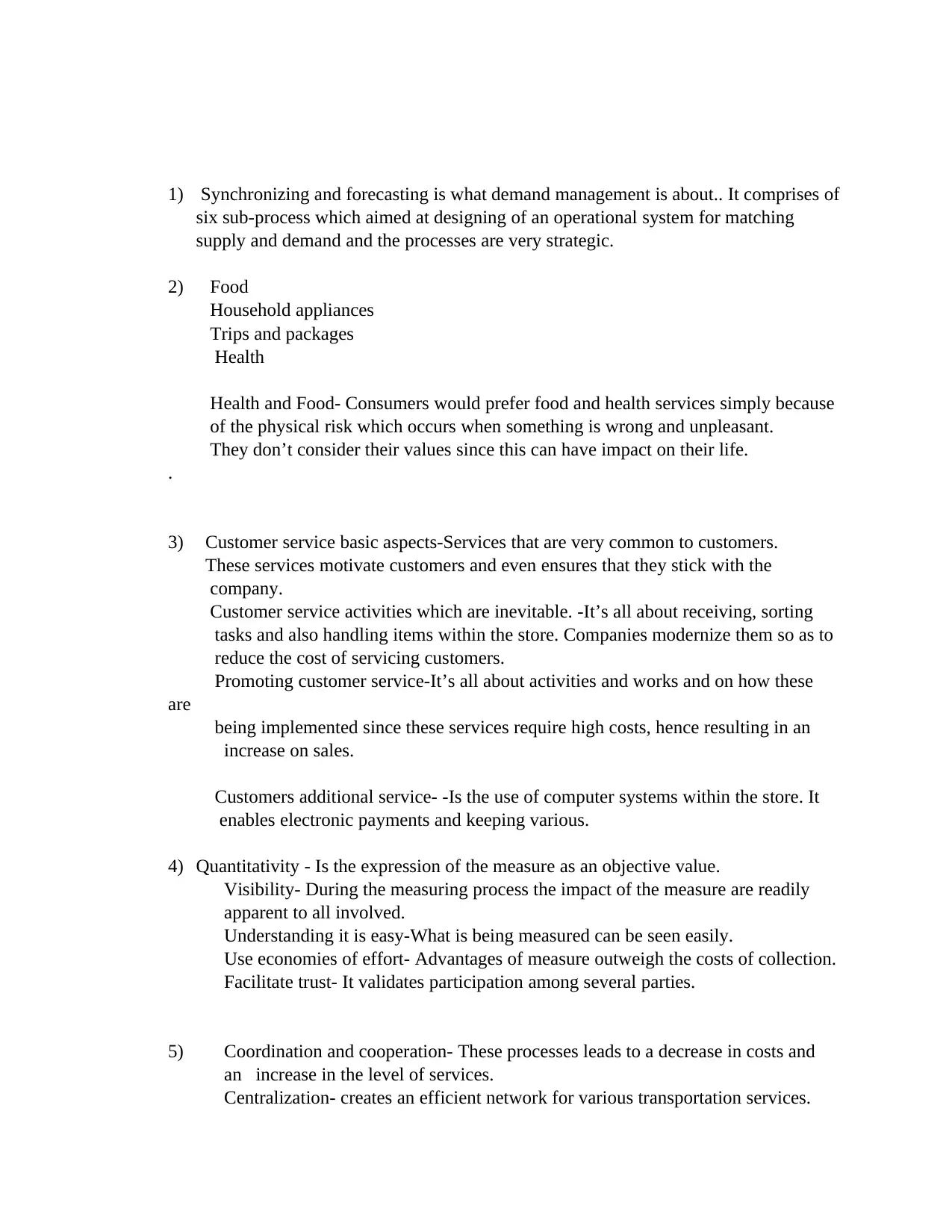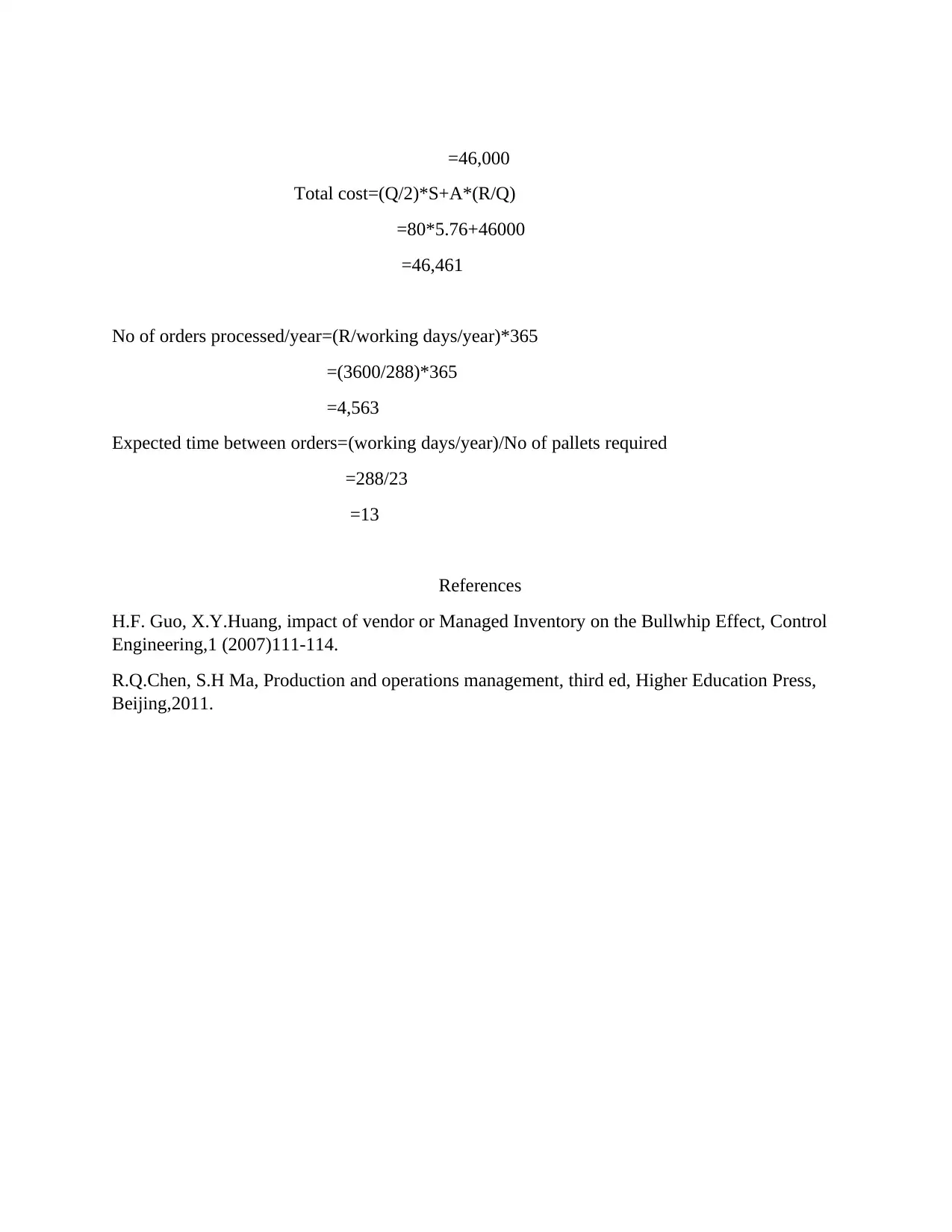Key Concepts in Logistics & Supply Chain Management - Overview
VerifiedAdded on 2023/05/31
|3
|578
|357
Homework Assignment
AI Summary
This assignment covers key concepts in logistics and supply chain management, including demand management's role in synchronizing supply and demand, and the strategic importance of its sub-processes. It discusses the varying degrees of importance consumers place on different products and services, focusing on risk and value. The assignment also explores the nature and importance of logistics-related elements of customer service, characteristics of good supply chain performance measures, and the role of reverse logistics. Furthermore, it examines the role of fourth-party logistics, the importance of transportation in logistics management, and methods to reduce the bullwhip effect. Finally, it includes an EOQ calculation and discusses the impact of seasonal variations and supply shocks on supply chains. Desklib provides access to similar solved assignments and study resources for students.
1 out of 3










![[object Object]](/_next/static/media/star-bottom.7253800d.svg)